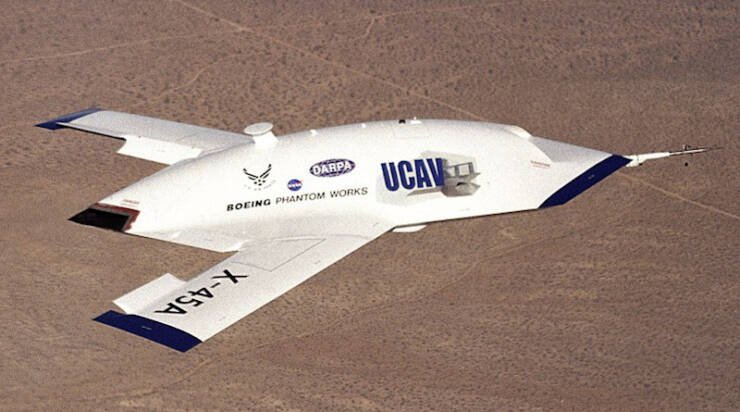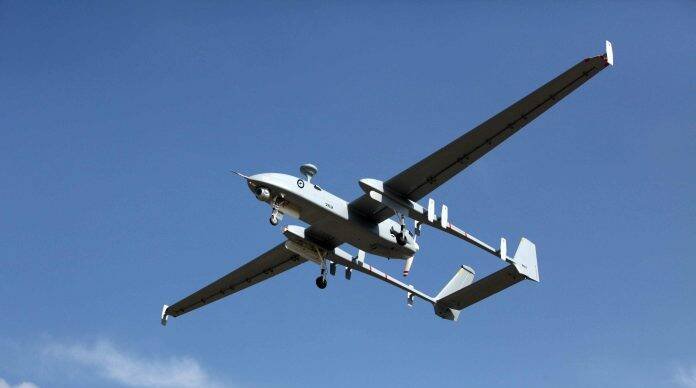
Military history is full of wrong predictions about the future of the next war. It is said that we talk about the next war but actually prepare for the last one because often the forecasters have left the armed forces unprepared for the next conflict. Perhaps no country has ever been able to predict the future of warfare entirely correctly. More often, poor predictions stem from failing to think holistically about the factors that drive changes in the environment and how advances in technology might alter the warfighting. While no one can predict with certainty the future war, the fury of the war in the 21st century is highly predictable. It’s a certainty that the future war will be intense and devastating.
War in the Indian context needs to be re-examined after the Kargil War with Pakistan and the recent standoff on the LAC with China. The Kargil War escalated very fast and it was more challenging due to the terrain but short of an all-out war. On the other hand, the recent standoff with China had a few skirmishes, followed by large-scale troop buildup by both sides and continued belligerence, tending to escalate into a full-fledged war. Future conflicts can be plotted somewhere on this matrix.
Shape of Future Battlespace
Future battles will be highly intense and destructive. The destruction is caused by firepower and, therefore, firepower delivered by any means will be pivotal to any future war, as has always been. However, the potential magnitude of destruction could also act as deterrence to starting a future armed conflict and, therefore, provide stability and peace.
The future battlefield will extend over hundreds of kilometers. It will be characterised by quick, swift and short engagements with high intensity; a non–linear battlefield extending into all three dimensions; simultaneity of operations; increased battlefield transparency and above all synergised and orchestrated employment of firepower with employment of precision and high-lethality weapon systems in a hybrid warfare environment. All the future wars with above characteristics will be fought in the backdrop of a NBC warfare threat.
Shaping the Battlefield
‘Shaping the Battlefield’ is a recent idea coined for the manoeuvre of warfare. It basically indicates shaping a desired situation on the battlefield and gaining military advantage for its own forces. Successful shaping of the battlefield facilitates channelising the enemy to conform to one’s own strategy and design of battle. In this, firepower plays a pivotal role, which includes discerning the enemy’s intentions early and engaging it with firepower, simultaneously in forward and depth areas. The destruction caused by fire is prohibitive and forces the enemy to take the desired course of action, in order to avoid death and destruction. Appropriate firepower assets are employed with the intention of causing punitive destruction and making the enemy lose its initiative, coherence and the will to fight even before the contact battle is joined.

The way ahead for the future is to consolidate and multiply the firepower by reworking the means of delivery, be it guns, missiles, aircraft or ships. The advanced technologies have to be infused with artificial intelligence in upgrading the target acquisition, precision in engagements with highly lethal payloads being delivered in real time using networked target acquisition and multitude of delivery platforms. Networked and well-coordinated employment of all available firepower resources to shape the battlefield and degrade the enemy in depth before the contact battle will ensure decisive defeat of the enemy.
Victory By Fire & Manoeuvre
Warfare quintessentially comprises Firepower and Manoeuvre, which are two sides of the same coin, and when well orchestrated they achieve decisive victory over the adversary. Terrain and the nuclear overhang restrict manoeuvre in our theatre of operations, since all three countries are armed with nuclear weapons. Deep manoeuvre may also cross the nuclear red lines of the adversaries and may trigger the nuclear holocaust.
It is well known that future conventional wars in the Indian sub-continent will be fought under the NBC backdrop. Hence, it will be very challenging to plan an offensive that involves manoeuvre in depth, particularly in the plains. In such a situation, favourable outcomes will be possible only through the massive application of firepower, causing prohibitive destruction and damage. This major restriction on the manoeuvre component of military operations makes firepower the most potent of the two, to break the will of the enemy to resist. Therefore, much greater emphasis will have to be placed on firepower to achieve military aims and objectives in land battles.
The constituents of firepower are platforms with ammunition, which can deliver from five dimensions: Land, Air, Surface of the sea, Below the sea-surface and possibly in times to come from Outer Space. These are Small Arms, Guns, Mortars, Rockets of Artillery, Tanks, Aircraft, Missiles, Unmanned Combat Aerial Vehicles (UCAVs), Armed Helicopters, Submarines and, in future, possibly Satellites. The lethality of ammunition in combination with means of delivery results in devastating firepower, which paves the way for victory.
Firepower 2.0
Advances in war fighting technologies have taken firepower and destruction to the next level. The impact of advances in technology on the conduct of warfare can be characterised into a number of dominant trends like increasing battlefield transparency, extended ranges of delivery weapons, large volume and high accuracy of fire, system integration and concentration of maximum firepower by networked delivery of TNT, etc. Some of the key issues are flagged as under:
Target Acquisition
The battlefield surveillance and acquisition of high value targets contribute to real time situational awareness and optimal utilisation of weapons array to destroy the targets. Today, there is multi-dimensional, multi-spectral and all-weather capability to cover the length and breadth of the battle space. Today, a wide array of equipment is available to enable acquisition of continuous surveillance capability over the battlefield. Foliage penetration radars will be further enhancing battlefield transparency in jungles and mountains. UAVs, UCAVs and aerostats are recognised as force-multipliers for target acquisition in the future battlefield.

Delivery Platforms
Aerial platforms are the best mode of firepower delivery at long distance. Multi-role aircraft fitted with smart munitions and toss-bombing capability have taken the battle to the guts of the enemy. Midair refuelling capability and AWACS are the force-multipliers that enable delivery of firepower in any part of the world.
The future of Artillery is Rockets and Missiles. There is an essential requirement of extended range, high precision and extremely destructive rockets and missiles to be inducted into the artillery. The replacement of existing inventory of multi-barrel rocket launchers will be the need of the hour. The BrahMos missile system is an excellent weapon but it also needs to be upgraded to extend its range up to 600 km with the latest avionics and navigation systems. The supersonic ability from the present 2.8 Mach may have to be improved to reduce the response time. There is no doubt that the future belongs to unmanned systems in all three dimensions of warfare. The acquisition of Remotely Piloted Aircraft Systems (RPAS) in a progressive manner will boost our armoury of firepower delivery.
Enhanced Ranges
The existing ranges of artillery weapon systems will be expected to increase by 50% to 100% across most platforms by 2040. In fact, with the extended reach of its missiles, rockets and medium guns, artillery firepower will systematically cause total annihilation of the enemy even before the contact battle joins, leaving only mopping up work for the ground forces.
Firepower Precision
Precision in engaging targets is critical to optimising firepower resources and enhancing their destruction capabilities manifold. The precision-guided munition (PGM) is the future. Futuristic active-seeker munitions will be able to autonomously course correct, thereby improving the probability of kill (PK) of weapons. Induction of various kinds of guided missiles, laser-aimed weapons, laser target designators that guide artillery rounds and development of smart and “brilliant” munition confirms the trend towards precision fire. The sensor-fused ammunition, VLAP, Excalibur and Extreme Accuracy Task Oriented (EXACTO) type ammunition systems with state-of-the-art navigation systems will be the norm. Most of these will be extensively used in the future war.
Lethality of Weapons
Lethality or the capacity of destruction by the weapon is more important than the intensity of firepower. It quantifies the amount of destruction caused to the designated target. Wide array of Improved Conventional Munitions (ICM) carrying anti-personnel grenades and lethal ‘air-burst’ ammunition can be ‘dispensed’ over soft targets such as administrative bases, rations and fuel storage dumps, headquarters and rest areas, causing extensive damage to the combatants in the depth areas disrupting supply chains and reinforcements.

Synergised Fires
Networking and improved communications using Artificial Intelligence enable real-time processing of target acquisition sensor data to centrally coordinate large numbers of delivery platforms. The intensity of firepower and destruction by information-intensified firepower units, made up of modern target-seekers, trained soldiers, combat platforms and weapon systems, tied together by a C3I system, is unprecedentedly great. Systems integration enhances force multiplication and gives a high level of intensity and accuracy to the overall firepower element of the force. The future battlefield will depend largely on digital data, voice and video communication networked firepower delivery systems.
Conclusion
The advent of gunpowder in the 10th Century and its usage in warfare from 13th Century brought in a paradigm shift in warfighting. Role of firepower has been pivotal to all victories since then and the same holds good even for future wars. The changing nature of warfare and its kaleidoscope has some constant determinants like firepower and resultant destruction. Destruction of men and materials to break the enemy’s will to fight has been the ultimate aim of war, and firepower in all forms and measures does that to ensure victory for the winner.
In the Indian context, it is imperative that modernisation of firepower delivery with precision and lethality is undertaken with alacrity so as to generate both qualitative and quantitative firepower asymmetries to achieve unassailable dominance on the future battlefield. The most dramatic change that we will see in the future will be the indigenous development of state-of-the-art firepower delivery platforms along with a wide array of ammunition systems. Strong firepower capability generates immense fear of destruction and hence a guarantee for peace. Neglect of firepower by a nation state is at its own peril.
-The writer is a veteran of Indian Army. He can be contacted at www.majgencpsingh.com.The views expressed are personal and do not necessarily reflect the views of Raksha Anirveda








